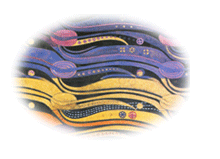
Weeks 1 & 2 Review Questions
- How do Adjustment Layers work and what are some of the benefits of implementing them?
Adjustment layers are used for adjusting colour & tone in photoshop; They contain colour correction information which is applied to all layers beneath the adjustment layer. Some of the advantages of Adjustment Layers include that they don't alter the actual image at all; & if they are saved in the psd, pdf or tiff format they can be edited without affecting the underlying pixels in the image; and you can make changes without big increases in the file size. - Explain in your own words what a Histogram is.
A histogram in Photoshop is a graph that displays the brightness or intensity of each colour from left to right; and the number of pixels at each brightness level from bottom to top. - Explain what happens to an image's pixels when you adjust the overall brightness and contrast using Levels? Hint: This comes right out of the Understanding Histograms & Levels lecture.
By using the 3 colour channels the pixels are redistributed along a broader brightness range. - What does 'non-destructive' mean in relation to working with Photoshop?
Non-destructive means that any changes to an image are applied to an adjustment layer rather than directly to the pixels of the underlying image; this means that any changes can be altered at a later date & there is never any damage to the pixel. - List 2 creative uses for the Non-Destructive Burning & Dodging technique you've just learned.
i. You can use it to lighten or darken an image
ii. You can use it to add highlights or deepen shadows in a graphic - What are some of the differences between the Curves command and the Levels Command
Levels - Allow you to change the brightness value of highlights, shadows & midtones, using the 3 colour channels.
Curves - Allow you more control: you can change brightness values in the range 0 - 255, whilst keeping other brightness values the same; you can also colour correct very precisely with curves using the 3 colour channels. - Why would you not want to use the brightest or darkest pixel reading in an image to color correct?
You don't want to use the brightest or darkest pixels in an image to colour correct, as these might be specks of dust or a scratch. Highlights & shadows should be areas of several pixels & retain some detail, so should never be pure black or pure white. - Explain the purpose of using a neutral grey in an image when color correcting.
Neutral greys can be used to check the balance of colours in an image; bringing them into balance aids in colour correcting an image. - How does the Threshold command aid in color correction work?
The Threshold command converts colours within in a image to black or white based on their brightness values. It enables the sampling of highlights & shadows in an image, based on which, the RGB values can be checked & altered if necessary.
Photoshop CS2
Web design: Patsy James
